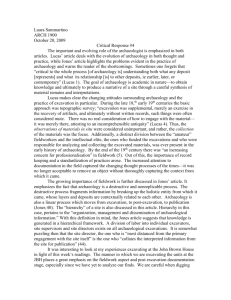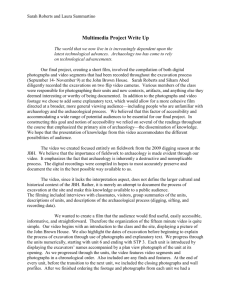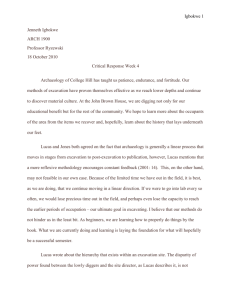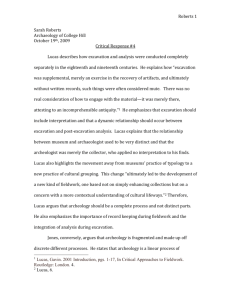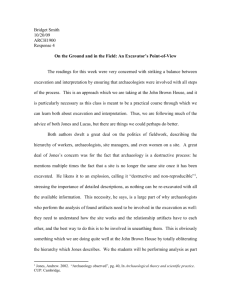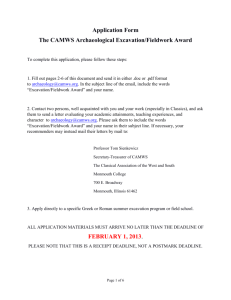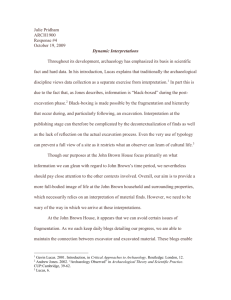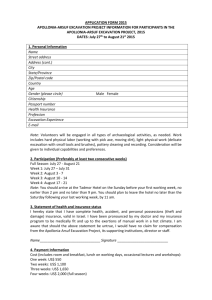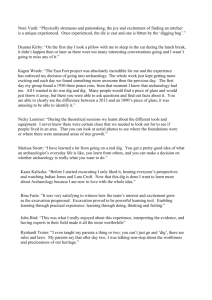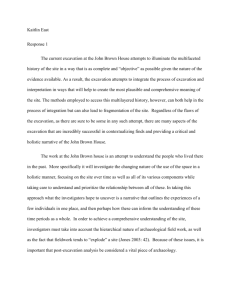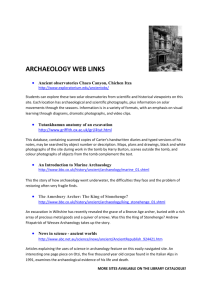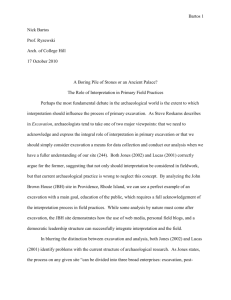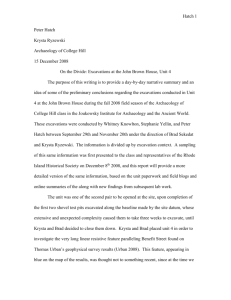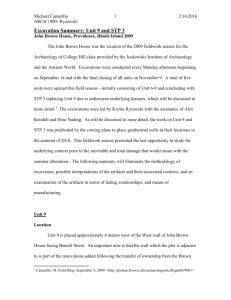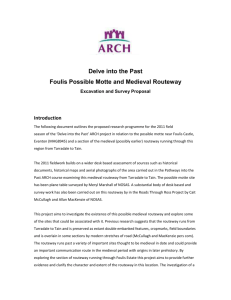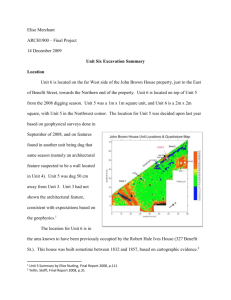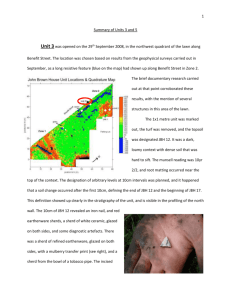allison iarocci critical response week four
advertisement
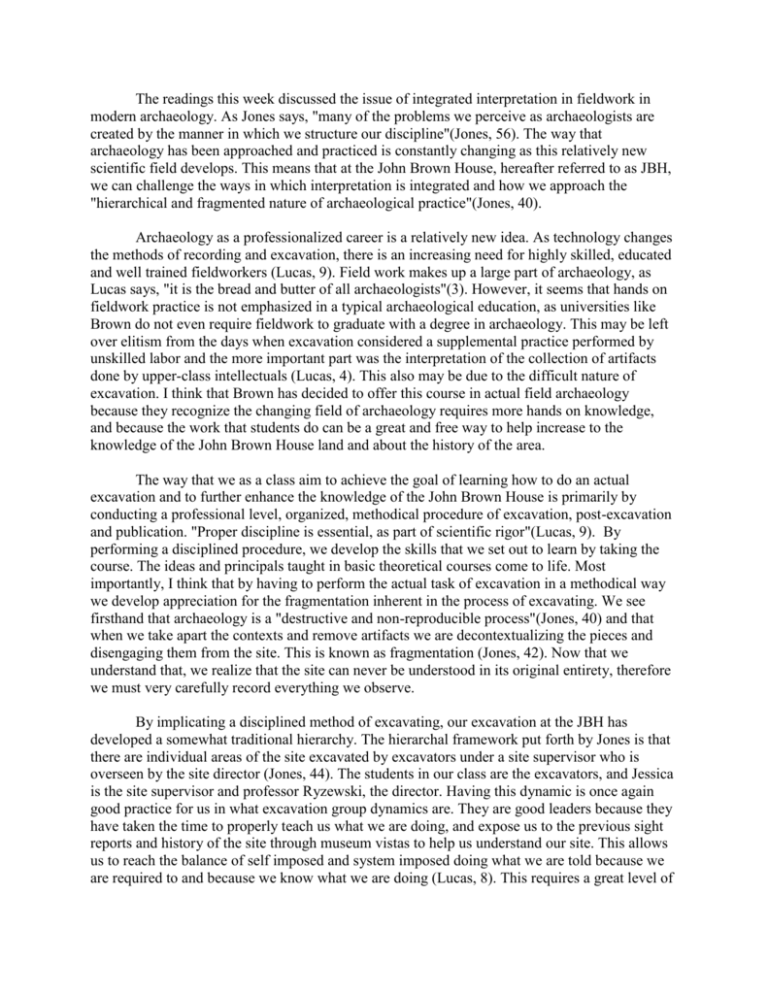
The readings this week discussed the issue of integrated interpretation in fieldwork in modern archaeology. As Jones says, "many of the problems we perceive as archaeologists are created by the manner in which we structure our discipline"(Jones, 56). The way that archaeology has been approached and practiced is constantly changing as this relatively new scientific field develops. This means that at the John Brown House, hereafter referred to as JBH, we can challenge the ways in which interpretation is integrated and how we approach the "hierarchical and fragmented nature of archaeological practice"(Jones, 40). Archaeology as a professionalized career is a relatively new idea. As technology changes the methods of recording and excavation, there is an increasing need for highly skilled, educated and well trained fieldworkers (Lucas, 9). Field work makes up a large part of archaeology, as Lucas says, "it is the bread and butter of all archaeologists"(3). However, it seems that hands on fieldwork practice is not emphasized in a typical archaeological education, as universities like Brown do not even require fieldwork to graduate with a degree in archaeology. This may be left over elitism from the days when excavation considered a supplemental practice performed by unskilled labor and the more important part was the interpretation of the collection of artifacts done by upper-class intellectuals (Lucas, 4). This also may be due to the difficult nature of excavation. I think that Brown has decided to offer this course in actual field archaeology because they recognize the changing field of archaeology requires more hands on knowledge, and because the work that students do can be a great and free way to help increase to the knowledge of the John Brown House land and about the history of the area. The way that we as a class aim to achieve the goal of learning how to do an actual excavation and to further enhance the knowledge of the John Brown House is primarily by conducting a professional level, organized, methodical procedure of excavation, post-excavation and publication. "Proper discipline is essential, as part of scientific rigor"(Lucas, 9). By performing a disciplined procedure, we develop the skills that we set out to learn by taking the course. The ideas and principals taught in basic theoretical courses come to life. Most importantly, I think that by having to perform the actual task of excavation in a methodical way we develop appreciation for the fragmentation inherent in the process of excavating. We see firsthand that archaeology is a "destructive and non-reproducible process"(Jones, 40) and that when we take apart the contexts and remove artifacts we are decontextualizing the pieces and disengaging them from the site. This is known as fragmentation (Jones, 42). Now that we understand that, we realize that the site can never be understood in its original entirety, therefore we must very carefully record everything we observe. By implicating a disciplined method of excavating, our excavation at the JBH has developed a somewhat traditional hierarchy. The hierarchal framework put forth by Jones is that there are individual areas of the site excavated by excavators under a site supervisor who is overseen by the site director (Jones, 44). The students in our class are the excavators, and Jessica is the site supervisor and professor Ryzewski, the director. Having this dynamic is once again good practice for us in what excavation group dynamics are. They are good leaders because they have taken the time to properly teach us what we are doing, and expose us to the previous sight reports and history of the site through museum vistas to help us understand our site. This allows us to reach the balance of self imposed and system imposed doing what we are told because we are required to and because we know what we are doing (Lucas, 8). This requires a great level of trust between the director and their team, all the way down to the excavators because it is their name that will often be the one on the line for the publication. Their implicating a systematic pro forma allows them to know that there is some standardization and objectivity in the reports, but because it is not professor Ryzewski writing the final report of our excavation season, which upsets the norm. What makes our site hierarchy not so traditional lies in the way that we choose to integrate interpretation into our excavation and therefore who writes the final reports. The two main sides to the issue of when to integrate interpretation into field work are the one who thinks that it is important to not "do it all later" but allow the educated excavator along with the site manager to keep a running interpretation. The other is that interpretation during the excavation is “little more than a glorified guess" and accurate interpretations can only be done in postexcavation work (Roskams, 245). I think the way our class approaches the issue is unique and allows us to have the benefits of both ways. We do not try to record actual interpretations of the finds as we excavate, we do keep a short, thoughtful blog written within a week of the work to record a more narrative version with some interpretation of what has happened. And because at our site we are untraditionally trusted to write the reports, we can draw on these earlier thoughts along with the post-excavation laboratory work we do. This allows for us to approach the excavation from a narrative and a data based way. The way in which we are learning how to keep a careful record at the JBH, within our hierarchy has taught us to understand the value in a well recorded and executed excavation. We are successfully learning about the practice of archaeology and adding to the knowledge base about the JBH through our finds and eventually through our publications.

